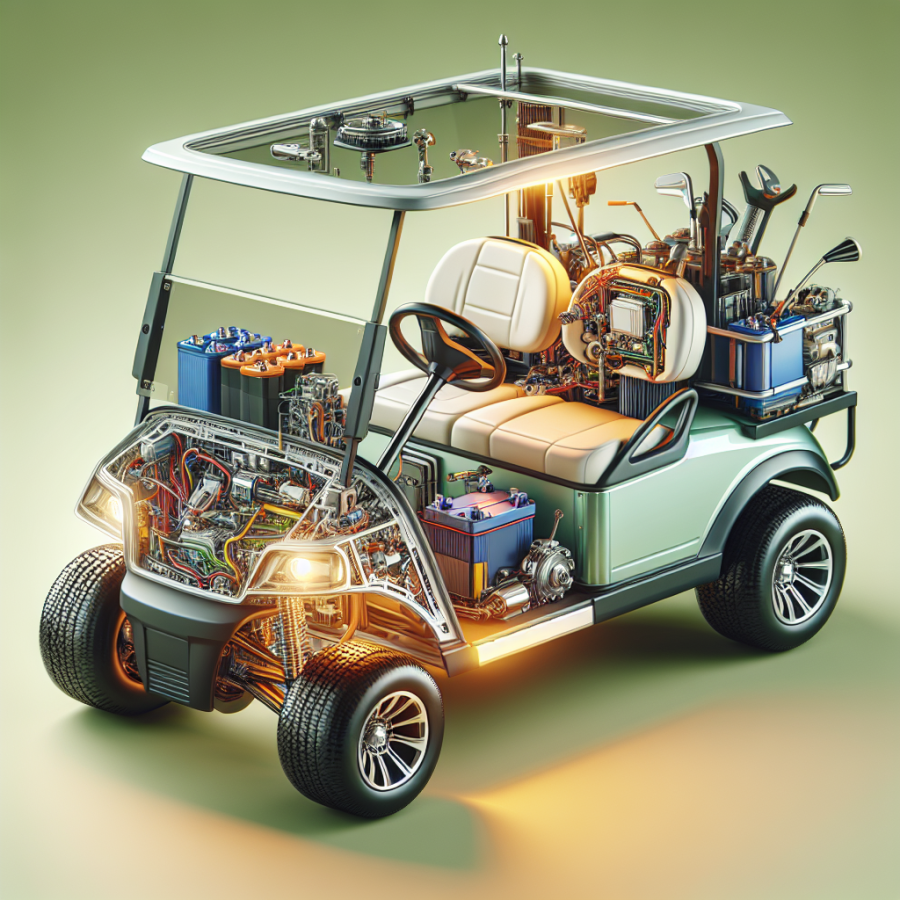Delving Deeper: The Functionality and Operations of Golf Carts
Golf carts, whether used for their original purpose on the course or as neighborhood transport, are incredibly fascinating in terms of their functionality. While they may seem simple, there's quite a bit happening beneath the surface to keep them running smoothly. Let's explore the core components and operation mechanisms that make these compact vehicles such efficient movers.
One of the fundamental characteristics that set golf carts apart from regular cars is the type of energy they use. Originally, golf carts were solely powered by gasoline. However, with increasing environmental awareness and advances in technology, more and more golf carts are using electric power. Electric golf carts are powered by a series of batteries, typically ranging from 36 to 48 volts, which are recharged by an onboard charger when the golf cart is not in use. Alternatively, gas-powered golf carts typically feature a single-cylinder engine and operate quite similarly to a car.
Next in the line of golf cart mechanics is the golf cart's transmission. Unlike the average car, most golf carts do not have a full transmission. Instead, they rely on a simpler system known as a continuously variable transmission (CVT). The CVT connects the engine to the wheels and allows for an infinite number of gear ratios, helping to keep the golf cart's speed under control. If you've ever noticed how a golf cart can maintain consistent speeds over hills and rough terrain, you've seen a CVT at work.
A golf cart’s steering mechanism is another fundamental component. Golf carts are typically designed with a rack-and-pinion steering system similar to many cars. This design allows the small vehicle to have sharp turning circles, offering optimal maneuverability. This is why a golf cart can easily navigate the winding pathways of a golf course or the narrow streets within a residential community.
The braking system is also crucial to golf cart mechanics. Regularly, electric golf carts use a regenerative braking system. This innovative system not only slows down the cart but also recharges the battery pack simultaneously. However, both gas and electric golf carts also employ a traditional mechanical braking system for instances when a quick or emergency stop is necessary.
The suspension and wheels of a golf cart also have unique considerations. Given that golf carts are intended for off-road use on golf courses, they need to have robust tires and a sturdy suspension to deal with various types of terrain. Since the vehicles are lightweight, a simple leaf spring or coil spring setup usually suffices.
Read also:
Navigating Florida's Rules: The Legality of Golf Carts on the Street"
Unveiling the Basics: Key Components of a Golf Cart
The golf cart, a staple prized for its convenience, efficiency, and performance in golf fields, residential communities, and numerous commercial industries, is a marvel of engineering. Understanding the basic components of a golf cart is the initial step to become familiar with the mechanics of this intricate mobile machine.
One of the most prominent components is the engine of a gas-powered golf cart. It functions just like any other internal combustion engine, using a mixture of gas and air ignited by a spark plug to generate motion. On the other hand, electric golf carts are powered by an electric motor. The engine or motor is what provides the golf cart with its power and torque, essential for propelling and driving the cart forward.
Next up is the drivetrain and transmission, components that play a pivotal role. The job of the drivetrain is to convert the power generated by the engine into rotational force, which in turn drives the wheels. On the flip side, the transmission, usually just a simple forward and backward switch in golf carts, is responsible for managing the gear ratios that control the cart's speed.
Battery systems are the lifeblood of electric golf carts. They are required to operate all of the cart's functions, from motion to lighting. Batteries are charged through a standard electrical outlet and are typically designed for deep-cycling, which means they can handle being drained and recharged regularly. Conversely, gas-powered carts come with a fuel tank to accommodate their gas requirements.
The frame and body of a golf cart are another key aspect, which often include the chassis, body panels, roof, and seating. Mostly, these structures are made of lightweight but durable materials, like aluminum and fiberglass, lending both durability and maneuverability to the vehicle.
The suspension system is also a crucial feature in ensuring a smooth riding experience. Front and rear suspensions manage the impact and shock caused by bumps or uneven terrain. Depending on the design and model, a golf cart may have either leaf springs, coil springs, or a combination of both.
Safety mechanisms, such as the braking system, lights, and horns, are integral. Golf carts feature disc or drum brakes controlled by a foot pedal, while lights and horns are important for navigation and signaling, especially when used in public or busy areas.
Lastly, let’s not forget the tires. Golf cart tires are designed mainly for turf traction and are not intended to exceed speeds of 15-25 miles per hour.




